clockwiseRotator
Iron
- Joined
- Aug 20, 2020
- Posts
- 39
- Reputation
- 65
I'm low iq what do you mean by jutting? Holding lower teeth in front of upper? How does that put force anywhere?
Follow along with the video below to see how to install our site as a web app on your home screen.

Note: this_feature_currently_requires_accessing_site_using_safari
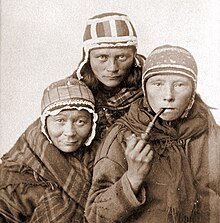
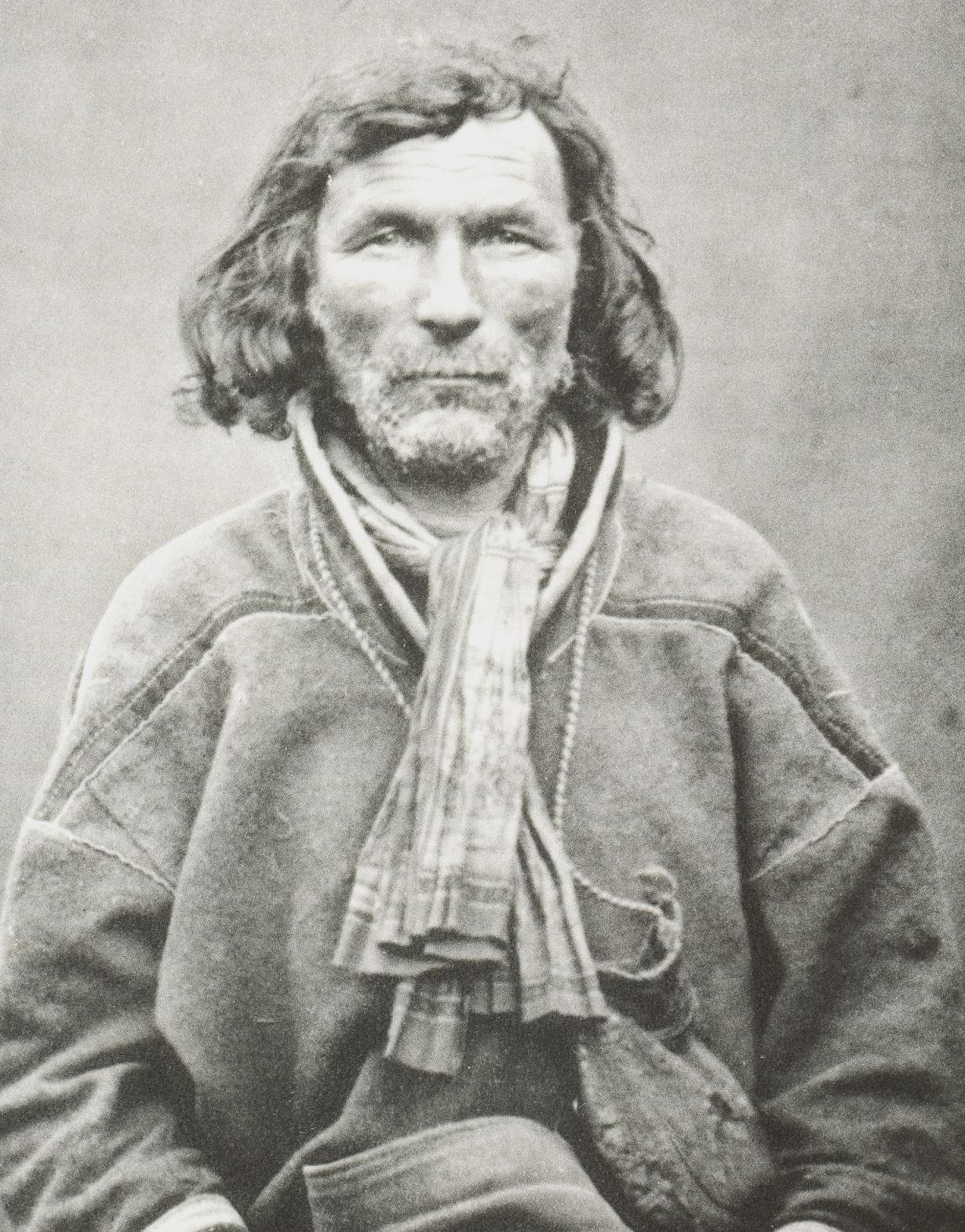

Actually this is something well researched: constant force retards suture growth, while cyclical force increases it.@antiantifa
You bring up some interesting points. I personally think you need a combination of both light and consistent and a bit heavier intermittent forces for optimal effects. Most people mew too hard in my view and this causes the hard mewing thing where everyone just winds up deepening their palate, especially since the back third of the palate has the most porus and thin bone. I have seen countless stories by this point about how people focused too much on the back third and messed up their face.
I would be skeptical of looking at bone strength research because most of that just has to do with more bone matrix formation (Wolffs law) which just thickens the bone on the inside with no to minimal change on the exterior, since we are trying to change bone shape and position rather than strength.
Adult faces DO NOT stop growing contrary to popular belief, it is just that this rate significantly slows down. Take any man at age 20 and at age 30, the structure of the face looks significantly different. Few at 20 look like men, they still look like boys, but the same can't be said at 30 (but who knows maybe the estrogens in the water might change that).
Faces were made to constantly grow for a variety of reasons. One was that since the teeth were constantly being worn down, the face had to compensate by growing so that you wouldn't wind up with short face syndrome. Another was to compensate for minor injuries that one acquired through life. Yet another was just general adaptability to changing soft tissue structures like the airway and growing brain.

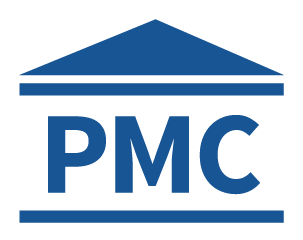

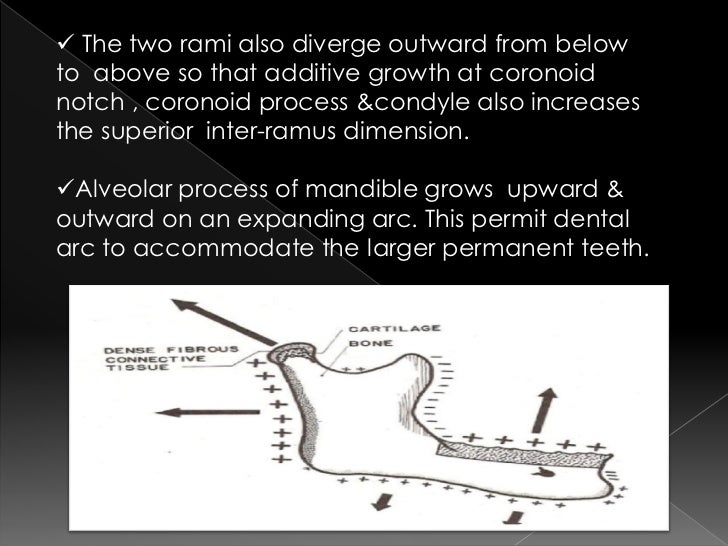
In which all places do you experience sutural cracking? I only experience these in my posterior skull. I wonder if wearing retractive headgear every night as a child resulted in premature sutural ossification in the circummaxillary sutures.I know for a fact my sutures have opened because of mewing because my whole face has become flexible, I can move my bones in any direction and there are all kinds of cracking sounds being produced.
Makes sense that if the mandibular molars are pushed backwards by the maxillary arch, the mandible would respond as shown in the pic, in order to create additional room in between the molars and the ramii.The thing is how does the mandible even grow?

I think this is part of the equation. We also should note the ramus "uprights" (moves back relative to the forward growing mandible) during pubertal growth, making room for 3rd molars (wisdom teeth), or at least it should.Makes sense that if the mandibular molars are pushed backwards by the maxillary arch, the mandible would respond as shown in the pic, in order to create additional room in between the molars and the ramii.
Idk, I can't tell, there are multiple cracks, I think mostly around sphenoid? Also my left maxillary-zygo suture feels open, but the right one I can't feel the hole.In which all places do you experience sutural cracking? I only experience these in my posterior skull. I wonder if wearing retractive headgear every night as a child resulted in premature sutural ossification in the circummaxillary sutures.
Whether the growth is through sutures or direct bone growth, it's undeniable that the adult face grows with age as you said, it's also undeniable that cyclical forces, proper nutrition and maybe even certain anabolics/growth hormone-analogues would optimize that growth.@antiantifa
I don't think the main mode of optimal change in the maxilla is sutural for an adult, I think it comes on an individual cellular basis with maybe some small sutural changes. The sutures were also designed as shock absorbers from tough chewing and some research shows that sutures prematurely close if there is inadequate stimulation. Chewing can also stimulate sutures too since it is cyclic.
The mandible grows on a cellular basis, where cells are removed from the back and added onto the front, not suturally.
Other cranial bones changing are mainly sutural with some remodeling shape changes (like the cranial base after puberty).


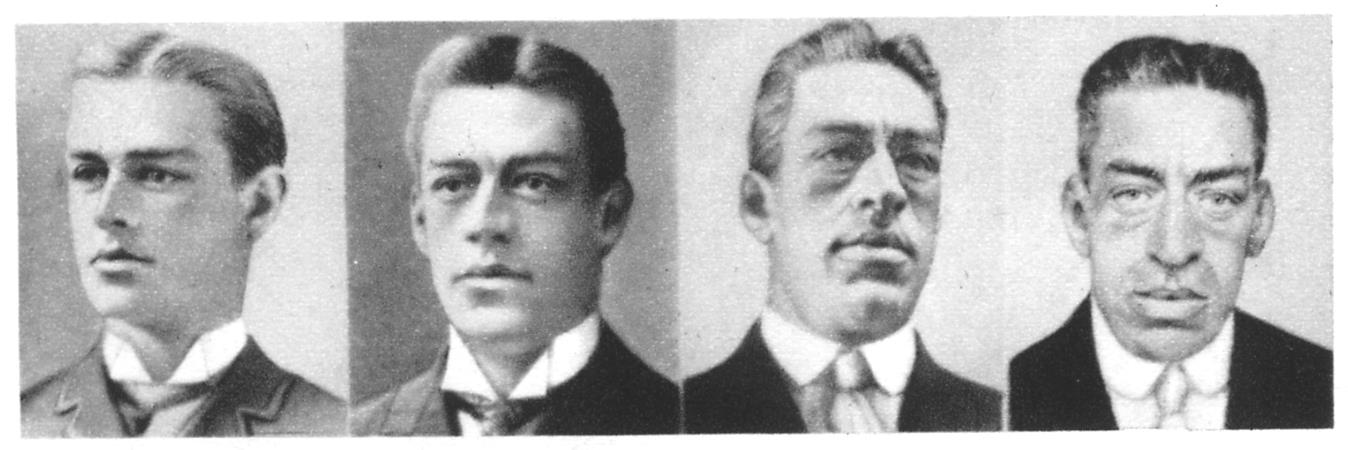
NOOOOOOOOOOOOOOOOOOOOOOOOOOOOOOOOOOOOOOOO

F for Respect, fallen comrade.NOOOOOOOOOOOOOOOOOOOOOOOOOOOOOOOOOOOOOOOO
I HAD BRACES WITH ELASTICS, AND 4 MOLARS AND A WISDOM TOOTH REMOVAL
NOOOOOOOOOOOOOOOOOOOOOOOOOOOOOOOOOOOOOOOOOOOOOOOOOOOOOOOOOOOOOOOOOOO

Try maybe opening this suture? Just push against your mandible while jutting your mandible forward, then reverse it by thumb-pulling on your maxilla forward, this works really well for me, often I am afraid of using too much force for fear of literally ripping my maxilla out.In which all places do you experience sutural cracking? I only experience these in my posterior skull. I wonder if wearing retractive headgear every night as a child resulted in premature sutural ossification in the circummaxillary sutures.
Pure mandibular growth alone will not lead to the aesthetic outcome most people want as this pic and others of gigantism/acromegaly show. Even people who use high amounts of GH long term, show this. In my view most positive changes will come from the bones changing shape and position with time rather than just growth. Chewing won't lead to the growth shown on the graph above, it will specifically deposit bone on the mandible where the stresses occur and the muscle insertion points.Whether the growth is through sutures or direct bone growth, it's undeniable that the adult face grows with age as you said, it's also undeniable that cyclical forces, proper nutrition and maybe even certain anabolics/growth hormone-analogues would optimize that growth.

As you can see in the graph above even at 30 years old the peak of mandible growth hasn't been reached.
27.5mm at 35 years old, 25mm at 20 years old, 22mm at 10 years old.
Basically growth in jaw size from 10-20 is about the same as 20-35.
And this is only mandible length in average adults who don't stimulate bone growth that much(don't forcefully swallow every few seconds, don't eat hard food, barely do volume of chewing).
This study shows growth hormone grows mandible in GH-deficient adults and that the age of initiation doesn't matter:

Growth hormone, gender and face shape in Prader-Willi syndrome - PubMed
Prader-Willi syndrome is a neurodevelopmental disorder resulting from the absence of expression of paternally expressed gene(s) in a highly imprinted region of chromosome 15q11-13. The physical phenotype includes evidence of growth retardation due to relative growth hormone deficiency, small...pubmed.ncbi.nlm.nih.gov
Another interesting fact is that people with gigantism have facial growth through-out their lifespan.
But it's not the aesthetic type of growth:

When the posterior maxilla resorbs with no direct change to the anterior, it will cause something similar to clockwise rotation, due to the fulcrum of change being somewhere in the middle of the maxilla and the anterior must compensate with a clockwise-like rotation. My take on this is:Also check out this interesting study:
"Age-related changes of the mid-facial skeleton occurred independently of gender, but at various time points in different locations. The observed changes seem to be driven by a bone resorption center located in the posterior maxilla, rather than by a rotational movement of the facial skeleton."
The Relationship between Bone Remodeling and the Clockwise Rotation of the Facial Skeleton: A Computed Tomographic Imaging-Based Evaluation - PubMed
Age-related changes of the midfacial skeleton occurred independently of gender, but at various time points in different locations. The observed changes seem to be driven by a bone resorption center located in the posterior maxilla, rather than by a rotational movement of the facial skeleton.pubmed.ncbi.nlm.nih.gov
If resorption can happen at posterior maxilla, I am sure deposition can happen as well.

Sorry for the spam, this study directly shows that in adults there is possible growth in midpalatal and pterygopalatine sutures:
"Conclusions: Midpalatal suture was successfully split by MSE in late adolescents, and the opening was almost perfectly parallel in a sagittal direction. Regarding the extent of transverse asymmetry of the split, on average one half of ANS moved more than the contralateral one by 1.1 mm. Pterygopalatine suture was split in its lower region by MSE, as the pyramidal process was pulled out from the pterygoid process. Patient gender and age had a negligible influence on suture opening for the age group considered in the study."
14-26 years old were the participants age.
This is also a very good blog to read:

When does midpalatal suture close ?
Summerized by : Dr.Hani Alhebshi. When does midpalatal suture close ? Upon searching the web , I found some useful articles answering this question. It has been stated that there is quite wide vari…sorthoclub.wordpress.com
I agree that pure mandibular growth will not work, but what I am thinking about is that posterior addition of bone = CCW rotation of the whole face.Pure mandibular growth alone will not lead to the aesthetic outcome most people want as this pic and others of gigantism/acromegaly show. Even people who use high amounts of GH long term, show this. In my view most positive changes will come from the bones changing shape and position with time rather than just growth. Chewing won't lead to the growth shown on the graph above, it will specifically deposit bone on the mandible where the stresses occur and the muscle insertion points.
When the posterior maxilla resorbs with no direct change to the anterior, it will cause something similar to clockwise rotation, due to the fulcrum of change being somewhere in the middle of the maxilla and the anterior must compensate with a clockwise-like rotation. My take on this is:
Anterior resorbed/moved up, posterior therefore deposited/moved down= CCW, can lead to open bite
Posterior resorbed/moved up, anterior therefore deposited/moved down= CW, can lead to deep bite
Anterior resorbed/moved up+posterior maintained or even slightly resorbed/moved up= Optimal and will lead to midface shortening, higher cheekbones, less round and well supported eyes. This is from that post on TGW, which would require a lot of upward mid facial compression from light forces:
View attachment 982657
For sure MSE for example proves that this can be done in adults. Even slower expanders have shown this. These sutures aren't really meant to close under normal conditions of cyclic load like heavy chewing but these days they close early cause nobody chews their food. Another thing is that the maxilla will move a mm or two forward from expansion alone because it jams the maxilla against the zygomatic buttress and the reciprocal force will wedge it forward a bit.
lol don't fucking die. I think I did hear something slight though.@betamanlet
Idk if you'll be able to hear it, but after every-time I say crack I crack my palate, my phone isn't very sensitive to sound, but you can actually hear the minuscule cracks, there's like 2-5 of them at once, especially the last one is very audible:
View attachment 982663
NOTE I DO NOT CONDONE OPENING UR SUTURES WITHOUT UR DOCTOR IF U KILL URSELF ON ACIDDENT THATS ON U NOT MY FAULT THIS WARNING IS FOR ALL READING THIS THREAD.
Lol just max volume it, the cracks you're hearing aren't me moving I am perfectly still, those are my bones being pulled and pushed multiple times.lol don't fucking die. I think I did hear something slight though.
Either way I'll make an update here in like a month or at least I notice actual difference in my face. We'll see if this theory is legit or not. I think I've already grown my face out a lot:lol don't fucking die. I think I did hear something slight though.
brutal blackpill. it really was my personality all alongNow that I think of it, there was something in that article series from Portland's TMJ clinic that relates to the study:
View attachment 978710
The Portland TMJ Clinic - Chapter 4
Portland Oregon temporomandibular joint Specialist, Dr. Summer specializes in treatment of temporomandibular disorder and Pain Management of the jaw jointportlandtmjclinic.com
are you thumb pulling or what@betamanlet
Idk if you'll be able to hear it, but after every-time I say crack I crack my palate, my phone isn't very sensitive to sound, but you can actually hear the minuscule cracks, there's like 2-5 of them at once, especially the last one is very audible:
View attachment 982663
NOTE I DO NOT CONDONE OPENING UR SUTURES WITHOUT UR DOCTOR IF U KILL URSELF ON ACIDDENT THATS ON U NOT MY FAULT THIS WARNING IS FOR ALL READING THIS THREAD.
Damn that sounds spooky.@betamanlet
Idk if you'll be able to hear it, but after every-time I say crack I crack my palate, my phone isn't very sensitive to sound, but you can actually hear the minuscule cracks, there's like 2-5 of them at once, especially the last one is very audible:
View attachment 982663
NOTE I DO NOT CONDONE OPENING UR SUTURES WITHOUT UR DOCTOR IF U KILL URSELF ON ACIDDENT THATS ON U NOT MY FAULT THIS WARNING IS FOR ALL READING THIS THREAD.
It'll be interesting to see if you'll keep changing all the way towards something like this:Either way I'll make an update here in like a month or at least I notice actual difference in my face. We'll see if this theory is legit or not. I think I've already grown my face out a lot:



About same weight/height. I know it's not the same angle, but there's undeniable difference between chin prominence. I've also always known since beginning my mandible begun inside my neck muscle, now I can stack about 1-2 fingers between gonion and neck muscle.

Lol!brutal blackpill. it really was my personality all along

If you don't mind I took the before and after pics of this morph and drew some very quick maxillary and mandibular anatomical structures sketches and superimposed them:



Not going to lie, to me I look really ugly in that morph, so I hope I don't change to that, but then again based on my avi you can already see I am a big fan of high gonial angles, not short ones.Damn that sounds spooky.
It'll be interesting to see if you'll keep changing all the way towards something like this:
View attachment 982889
That may be a bit too westernized silhouette though. What's your ethnicity?
Lol!
View attachment 982878
IMO ramus is simply too short in the morph, which makes me look weird.If you don't mind I took the before and after pics of this morph and drew some very quick maxillary and mandibular anatomical structures sketches and superimposed them:
View attachment 982951View attachment 982952View attachment 982954
Not going to lie, to me I look really ugly in that morph, so I hope I don't change to that, but then again based on my avi you can already see I am a big fan of high gonial angles, not short ones.
My ethnicity is Monogolo-Russian.
I agree now that you pointed it out. I seem to have a fringe sense of aesthetics anyway, people rarely agree with my edits. I've also noticed that you quickly become face-blind while working on an edit. Often you'll make a change that looks good in the moment, only to return to it the following day and wonder what the hell you were thinking.IMO ramus is simply too short in the morph, which makes me look weird.
@betamanlet
@antiantifa
I can't remember where I found it but here is an interesting gif that shows changes in the maxilla. This is superimposed in the S-N plane so it doesn't show changes in the sphenoid:
Ears too elfish? I recommend neck training. The sternocleidomastoid attaches right behind the ear (mastoid process) and this will push the bottom part of the ears out.Yeah I need these changes to rotate my ears.
@betamanlet
@antiantifa
I can't remember where I found it but here is an interesting gif that shows changes in the maxilla. This is superimposed in the S-N plane so it doesn't show changes in the sphenoid:
I don't where it came from exactly know either, just had it saved. Tried reverse image searching it but it turned up nothing. I think this study may shed some light on it though https://www.researchgate.net/public...predicts_variation_in_internal_skeletal_shapeThat's one of my favorite gifs. I have no idea where it came from though or what the context around it is. Is this craniostructurally valid movement, with the dynamics between all bones taken in account? Or is it just a loose morph? Interesting in any case. Would be amazing to end up with such movement.

Interesting. I think you were right about the dual bite by the way. I've been forming my chewing pattern around the jutting motion now too, crushing the food in between the side surfaces of the incisors and canines (rather than in between the top surface of the molars). Haven't had any TMJ popping so far. This has turned out to demand a lot from the lateral pterygoids, it's clear that they had been under-utilized all this time.I don't where it came from exactly know either, just had it saved. Tried reverse image searching it but it turned up nothing. I think this study may shed some light on it though https://www.researchgate.net/public...predicts_variation_in_internal_skeletal_shape
Found this post on lookism too (https://lookism.net/threads/on-the-cranial-base.381027/), interesting read, with this gif and this pic:
View attachment 987268
It looks pretty valid to me based on the changes. The occipital bone is moving up, and if superimposed on F-N instead of S-N the sphenoid is also moving up. The nasal bone and nasal floor change, the maxillary sinus reshaping/"cheek line", and the forwards and up movement of the whole palate and upper incisors, and the cranial base angle becoming acute is consistent to what I've seen and believe to be correct so I think its legit.
Good to hear. The orthotropic device called the Biobloc stage 3 has people hold a jutting position for 18-20 hours per day initially, then people just wearing it over night. It is said that the TMJ itself takes at least 6 months to remodel to the new position and the muscles to change their position and shape up to a year to year and a half after that to keep that position stable.Interesting. I think you were right about the dual bite by the way. I've been forming my chewing pattern around the jutting motion now too, crushing the food in between the side surfaces of the incisors and canines (rather than in between the top surface of the molars). Haven't had any TMJ popping so far. This has turned out to demand a lot from the lateral pterygoids, it's clear that they had been under-utilized all this time.
Already do neck training often.Ears too elfish? I recommend neck training. The sternocleidomastoid attaches right behind the ear (mastoid process) and this will push the bottom part of the ears out.

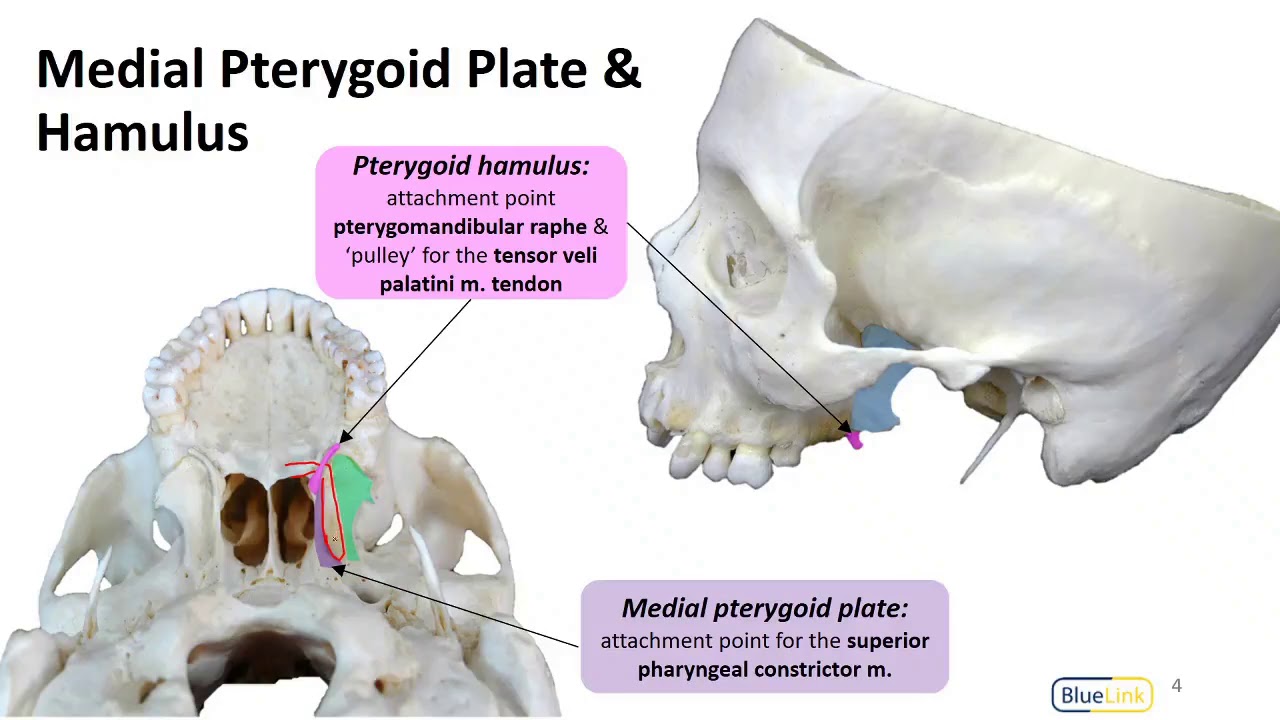
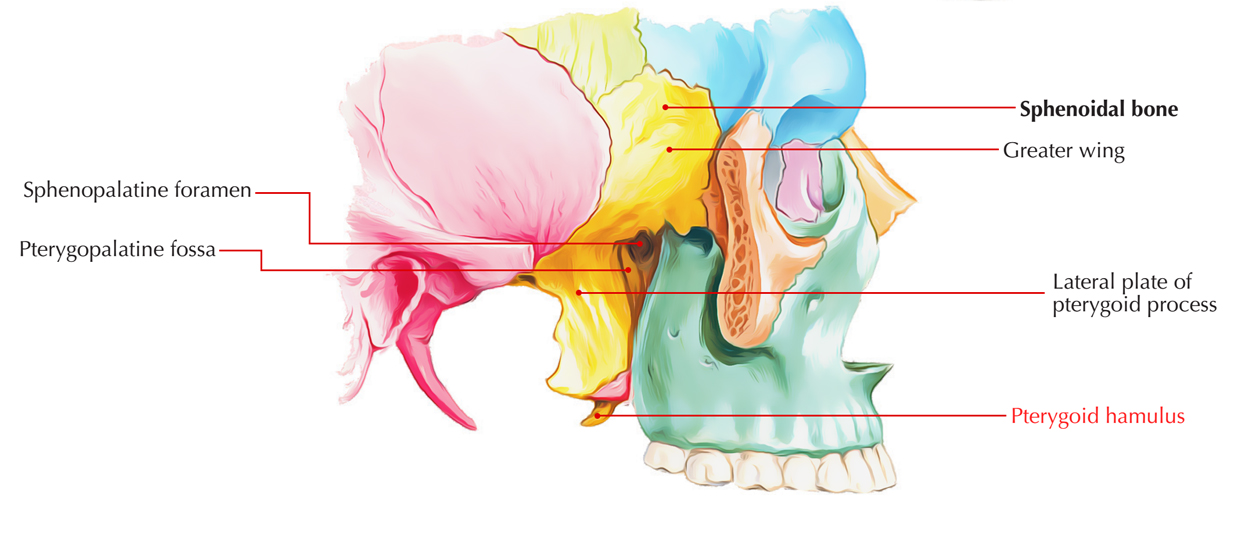
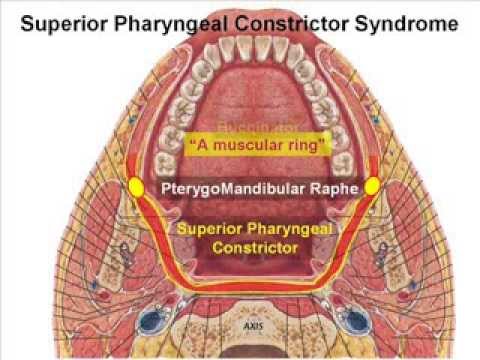
In this case the soft palate muscles are the levator/tensor palatini,and the muscle surrounding them.In palatal clefts, the muscles of the soft palate are hypoplastic
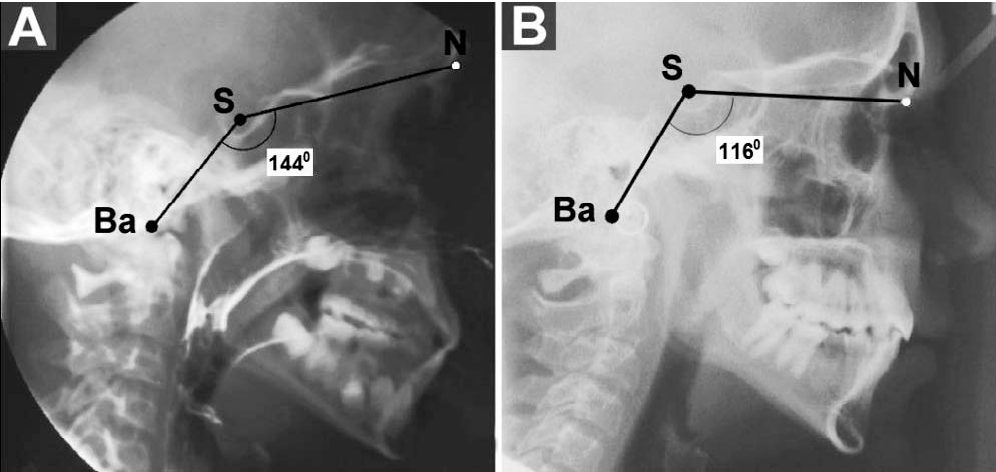
Radiographs of a platybasic individual (A) demonstrating an obtuse cranial-base angle (1448) and radiographs of a nonplatybasic patient (B) demonstrating a more acute cranial-base angle (1168). Ba-S-N reference points indicate the cranial-base angle; S-N, anterior cranial base; Ba-S, posterior cranial base. Ba basion; S sella; N nasion. Less
VPI = Velopharyngeal Incompetence = weak levator and tensor palatini muscles.The prevalence of platybasia was significantly higher in the VPI group (28.7%) than in the normal controls (2.4%)
can you fix short distance between incisor and nose?Man you have to explain what you do at night with your teeth. You have some form of bruxism that gave you too much CCW rotation and gave you a giga-chad jaw at the expense of no visible teeth in your smile.
You have a ridiculously short distance between your incisor and your nose as well.
dont think u can do so naturally, typically this is caused by clenching which causes the bone to actually recede.can you fix short distance between incisor and nose?
Interesting so you think these muscles are controlling the rotation of the temporal bone and cranial base orientation? It is hypothetically possible tbh. I think temporalis also has some influence on both mandibular position stability and cranial base.@Babushkacatlady
@betamanlet
View attachment 989837



These muscles above are all much more relevant for cranial base than masticatory muscles.
In this case the soft palate muscles are the levator/tensor palatini,and the muscle surrounding them.

VPI = Velopharyngeal Incompetence = weak levator and tensor palatini muscles.
If you swallow a certain way, where you tense the lateral pterygoid, the inferior anterior tongue muscles, the palatoglossus and the levator palatini, you can feel the temporal bone being pulled downwards at the inferior anterior region.
Currently my temporal bone is very CCW rotated. I wonder if CCW rotated temporal bone equals CW rotated maxilla?


Jutting is cope@Copemaxxing keep messaging me with his profile, he has most CCW rotated profile I've ever seen. He also has some form of bruxism(probably jutting).
Is jutting now legit for CCW rotation or not?
@betamanlet
Wake the fuck up, faggot and answer this question, you kept posting years ago about jutting and shit, what is ur personal results with this shit?
Anterior resorbed/moved up+posterior maintained or even slightly resorbed/moved up= Optimal and will lead to midface shortening, higher cheekbones, less round and well supported eyes. This is from that post on TGW, which would require a lot of upward mid facial compression from light forces:

Mewing over several years. No surgery will fix the long midface but can only offer camouflage options like a rhinoplasty and cheek augmentation, but it will still look odd.how do u achieve this?
IMO doesn't look like a good change, lack of vertical growth.Mewing over several years. No surgery will fix the long midface but can only offer camouflage options like a rhinoplasty and cheek augmentation, but it will still look odd.
lol ur name checks out, ur supposed to jut while keeping teeth contact, but idk if it's legit/healthyDon't you guys look like with a severe underbite when jutting? I can't even protrude lower jaw even a bit, cuz it looks legit retarded. Maybe it's cause of my recession/edge-to-edge bite.
not sure what that means. Even if I move lower teeth like 2mms forward I look like I have underbite.lol ur name checks out, ur supposed to jut while keeping teeth contact, but idk if it's legit/healthy